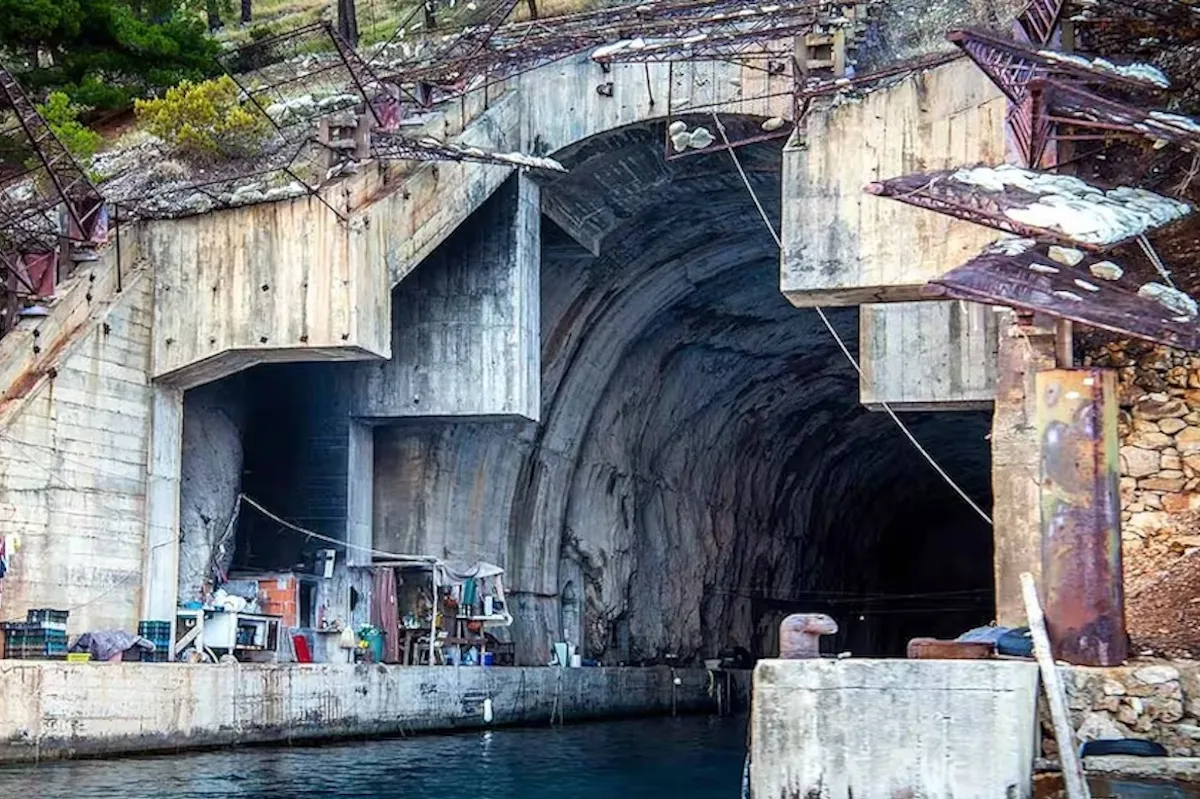With the construction of two key naval bases—INS Varsha on the east coast and INS Kadamba on the west—India is greatly expanding its naval capabilities. With the goal of enhancing national security and projecting force in the Indo-Pacific area, both sites are essential to India’s maritime strategy.
About 70 kilometers from Visakhapatnam, close to Rambilli, Andhra Pradesh, INS Varsha is now under construction. India’s nuclear-powered submarines, such as ballistic missile submarines (SSBNs) and attack submarines (SSNs), would be housed at this subterranean station. The project, which is expected to cost $3.75 billion, will cover an area of roughly 20 square kilometers and host at least 10 nuclear submarines by 2025–2026.
In order to reduce the chance of being seen by enemy satellites, the facility will have long tunnels that will enable submarines to enter and escape without surfacing.
Its strategic importance is increased by its proximity to the Bhabha Atomic Research Centre (BARC), which makes it easier to assist nuclear operations.
NS Varsha will have crew quarters, repair facilities, and cutting-edge command and control technologies for naval operations in real time. Its goal is to strengthen India’s ability to deter regional threats from Pakistan and China.
An essential part of India’s maritime policy, INS Varsha provides increased operational flexibility in the Bay of Bengal. In order to promote stability and deterrence in the area, it seeks to fortify cooperative security frameworks with allies including the US, Japan, and Australia under the Quad alliance.
As part of Project Seabird, INS Kadamba, which is situated in Karwar, Karnataka, is receiving major modifications. When finished, it will be the biggest naval base east of the Suez Canal, big enough to accommodate the INS Vikramaditya, India’s largest warship.
With India’s first ship-lift facility, INS Kadamba can now dock and undock warships and submarines with ease. This facility improves the ability to maintain a variety of navy warships.
Larger ships that are unable to dock at other Indian ports because of depth restrictions can be accommodated at the base because to its natural deep-water harbor.
The goal of ongoing Phase-IIA improvements is to allow INS Kadamba to accommodate up to 50 frontline warships. This includes better housing for staff members and a new pier for Offshore Patrol Vessels.
INS Kadamba improves the Indian Navy’s operating flexibility in the Indian Ocean Region by being situated closer to Pakistan than earlier stations in Mumbai. Because of its position, the base may be quickly deployed while staying out of Pakistan’s air force’s possible danger range. Sustaining maritime security and successfully addressing regional issues depend on this strategic orientation.
An important development in India’s naval capability is the construction of INS Varsha and the improvement of INS Kadamba. In addition to enhancing operational preparedness, these stations serve as a symbol of India’s dedication to protecting its maritime interests in the face of shifting Indo-Pacific geopolitical conditions. India solidifies its standing as one of Asia’s most powerful maritime nations by extending its naval facilities.



